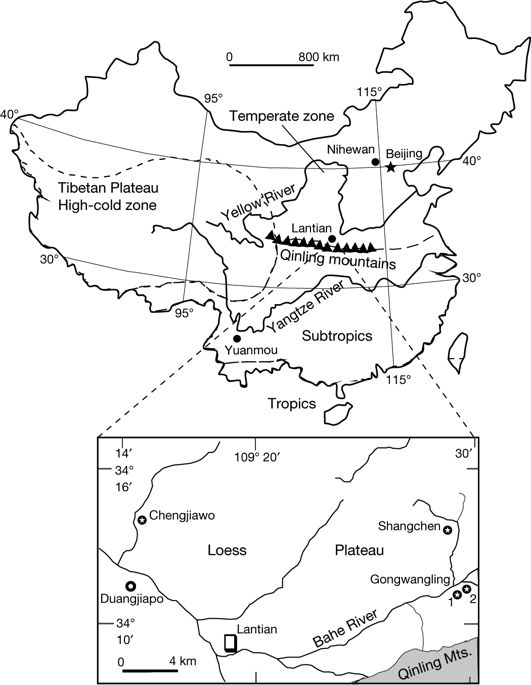Our official English website, www.x-mol.net, welcomes your feedback! (Note: you will need to create a separate account there.)
Hominin occupation of the Chinese Loess Plateau since about 2.1 million years ago
Nature ( IF 64.8 ) Pub Date : 2018-07-01 , DOI: 10.1038/s41586-018-0299-4 Zhaoyu Zhu 1, 2 , Robin Dennell 3 , Weiwen Huang 2, 4 , Yi Wu 5 , Shifan Qiu 6 , Shixia Yang 4, 7 , Zhiguo Rao 8 , Yamei Hou 2, 4 , Jiubing Xie 9 , Jiangwei Han 10 , Tingping Ouyang 1, 11
Nature ( IF 64.8 ) Pub Date : 2018-07-01 , DOI: 10.1038/s41586-018-0299-4 Zhaoyu Zhu 1, 2 , Robin Dennell 3 , Weiwen Huang 2, 4 , Yi Wu 5 , Shifan Qiu 6 , Shixia Yang 4, 7 , Zhiguo Rao 8 , Yamei Hou 2, 4 , Jiubing Xie 9 , Jiangwei Han 10 , Tingping Ouyang 1, 11
Affiliation

|
Considerable attention has been paid to dating the earliest appearance of hominins outside Africa. The earliest skeletal and artefactual evidence for the genus Homo in Asia currently comes from Dmanisi, Georgia, and is dated to approximately 1.77–1.85 million years ago (Ma)1. Two incisors that may belong to Homo erectus come from Yuanmou, south China, and are dated to 1.7 Ma2; the next-oldest evidence is an H. erectus cranium from Lantian (Gongwangling)—which has recently been dated to 1.63 Ma3—and the earliest hominin fossils from the Sangiran dome in Java, which are dated to about 1.5–1.6 Ma4. Artefacts from Majuangou III5 and Shangshazui6 in the Nihewan basin, north China, have also been dated to 1.6–1.7 Ma. Here we report an Early Pleistocene and largely continuous artefact sequence from Shangchen, which is a newly discovered Palaeolithic locality of the southern Chinese Loess Plateau, near Gongwangling in Lantian county. The site contains 17 artefact layers that extend from palaeosol S15—dated to approximately 1.26 Ma—to loess L28, which we date to about 2.12 Ma. This discovery implies that hominins left Africa earlier than indicated by the evidence from Dmanisi.An Early Pleistocene artefact assemblage from the Chinese Loess Plateau indicates that hominins had left Africa by at least 2.1 million years ago, and occupied the Loess Plateau repeatedly for a long time.
更新日期:2018-07-01


























 京公网安备 11010802027423号
京公网安备 11010802027423号